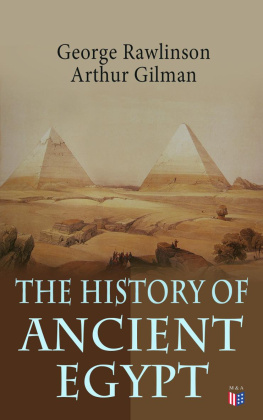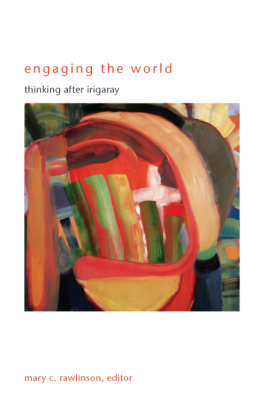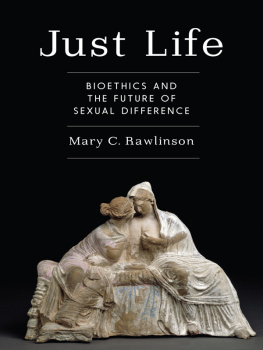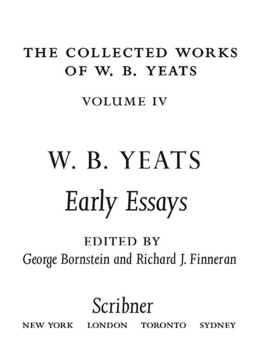George Rawlinson - The Collected Works of George Rawlinson
Here you can read online George Rawlinson - The Collected Works of George Rawlinson full text of the book (entire story) in english for free. Download pdf and epub, get meaning, cover and reviews about this ebook. year: 2018, publisher: e-artnow, genre: Detective and thriller. Description of the work, (preface) as well as reviews are available. Best literature library LitArk.com created for fans of good reading and offers a wide selection of genres:
Romance novel
Science fiction
Adventure
Detective
Science
History
Home and family
Prose
Art
Politics
Computer
Non-fiction
Religion
Business
Children
Humor
Choose a favorite category and find really read worthwhile books. Enjoy immersion in the world of imagination, feel the emotions of the characters or learn something new for yourself, make an fascinating discovery.
- Book:The Collected Works of George Rawlinson
- Author:
- Publisher:e-artnow
- Genre:
- Year:2018
- Rating:5 / 5
- Favourites:Add to favourites
- Your mark:
- 100
- 1
- 2
- 3
- 4
- 5
The Collected Works of George Rawlinson: summary, description and annotation
We offer to read an annotation, description, summary or preface (depends on what the author of the book "The Collected Works of George Rawlinson" wrote himself). If you haven't found the necessary information about the book — write in the comments, we will try to find it.
The Collected Works of George Rawlinson — read online for free the complete book (whole text) full work
Below is the text of the book, divided by pages. System saving the place of the last page read, allows you to conveniently read the book "The Collected Works of George Rawlinson" online for free, without having to search again every time where you left off. Put a bookmark, and you can go to the page where you finished reading at any time.
Font size:
Interval:
Bookmark:

Contact: info@e-artnow.org
The Land of Egypt.
In shape Egypt is like a lily with a crooked stem. A broad blossom terminates it at its upper end; a button of a bud projects from the stalk a little below the blossom, on the left-hand side. The broad blossom is the Delta, extending from Aboosir to Tineh, a direct distance of a hundred and eighty miles, which the projection of the coastthe graceful swell of the petalsenlarges to two hundred and thirty. The bud is the Fayoum, a natural depression in the hills that shut in the Nile valley on the west, which has been rendered cultivable for many thousands of years by the introduction into it of the Nile water, through a canal known as the "Bahr Yousouf." The long stalk of the lily is the Nile valley itself, which is a ravine scooped in the rocky soil for seven hundred miles from the First Cataract to the apex of the Delta, sometimes not more than a mile broad, never more than eight or ten miles. No other country in the world is so strangely shaped, so long compared to its width, so straggling, so hard to govern from a single centre.
At the first glance, the country seems to divide itself into two strongly contrasted regions; and this was the original impression which it made upon its inhabitants. The natives from a very early time designated their land as "the two lands," and represented it by a hieroglyph in which the form used to express "land" was doubled. The kings were called "chiefs of the Two Lands," and wore two crowns, as being kings of two countries. The Hebrews caught up the idea, and though they sometimes called Egypt "Mazor" in the singular number, preferred commonly to designate it by the dual form "Mizraim," which means "the two Mazors." These "two Mazors," "two Egypts," or "two lands," were, of course, the blossom and the stalk, the broad tract upon the Mediterranean known as "Lower Egypt," or "the Delta," and the long narrow valley that lies, like a green snake, to the south, which bears the name of "Upper Egypt," or "the Said." Nothing is more striking than the contrast between these two regions. Entering Egypt from the Mediterranean, or from Asia by the caravan route, the traveller sees stretching before him an apparently boundless plain, wholly unbroken by natural elevations, generally green with crops or with marshy plants, and canopied by a cloudless sky, which rests everywhere on a distant flat horizon. An absolute monotony surrounds him. No alternation of plain and highland, meadow and forest, no slopes of hills, or hanging woods, or dells, or gorges, or cascades, or rushing streams, or babbling rills, meet his gaze on any side; look which way he will, all is sameness, one vast smooth expanse of rich alluvial soil, varying only in being cultivated or else allowed to lie waste. Turning his back with something of weariness on the dull uniformity of this featureless plain, the wayfarer proceeds southwards, and enters, at the distance of a hundred miles from the coast, on an entirely new scene. Instead of an illimitable prospect meeting him on every side, he finds himself in a comparatively narrow vale, up and down which the eye still commands an extensive view, but where the prospect on either side is blocked at the distance of a few miles by rocky ranges of hills, white or yellow or tawny, sometimes drawing so near as to threaten an obstruction of the river course, sometimes receding so far as to leave some miles of cultivable soil on either side of the stream. The rocky ranges, as he approaches them, have a stern and forbidding aspect. They rise for the most part, abruptly in bare grandeur; on their craggy sides grows neither moss nor heather; no trees clothe their steep heights. They seem intended, like the mountains that enclosed the abode of Rasselas, to keep in the inhabitants of the vale within their narrow limits, and bar them out from any commerce or acquaintance with the regions beyond.
Such is the twofold division of the country which impresses the observer strongly at the first. On a longer sojourn and a more intimate familiarity, the twofold division gives place to one which is threefold. The lower differs from the upper valley, it is a sort of debatable region, half plain, half vale; the cultivable surface spreads itself out more widely, the enclosing hills recede into the distance; above all, to the middle tract belongs the open space of the Fayoum nearly fifty miles across in its greatest diameter, and containing an area of four hundred square miles. Hence, with some of the occupants of Egypt a triple division has been preferred to a twofold one, the Greeks interposing the "Heptanomis" between the Thebais and the Delta, and the Arabs the "Vostani" between the Said and the Bahari, or "country of the sea."
terrace to a height, in some places, of six thousand feet. Both are sparsely inhabited, and by tribes of a different race from the Egyptiantribes whose allegiance to the rulers of Egypt is in the best times nominal, and who for the most part spurn the very idea of submission to authority.
If, then, the true Egypt be the tract that we have describedthe Nile valley, with the Fayoum and the Deltathe lily stalk, the bud, and the blossomwe can well understand how it came to be said of old, that "Egypt was the gift of the river." Not that the lively Greek, who first used the expression, divined exactly the scientific truth of the matter. The fancy of Herodotus saw Africa, originally, doubly severed from Asia by two parallel fjords, one running inland northwards from the Indian Ocean, as the Red Sea does to this day, and the other penetrating inland southwards from the Mediterranean to an equal or greater distance! The Nile, he said, pouring itself into this latter fjord, had by degrees filled it up, and had then gone on and by further deposits turned into land a large piece of the "sea of the Greeks," as was evident from the projection of the shore of the Delta beyond the general coast-line of Africa eastward and westward; and, he added, "I am convinced, for my own part, that if the Nile should please to divert his waters from their present bed into the Red Sea, he would fill it up and turn it into dry land in the space of twenty thousand years, or maybe in half that timefor he is a mighty river and a most energetic one." Here, in this last expression, he is thoroughly right, though the method of the Nile's energy has been other than he supposed. The Nile, working from its immense reservoirs in the equatorial regions, has gradually scooped itself out a deep bed in the sand and rock of the desert, which must have originally extended across the whole of northern Africa from the Atlantic to the Red Sea. Having scooped itself out this bed to a depth, in places, of three hundred feet from the desert level, it has then proceeded partially to fill it up with its own deposits. Occupying, when it is at its height, the entire bed, and presenting at that time the appearance of a vast lake, or succession of lakes, it deposes every day a portion of sediment over the whole space which it covers: then, contracting gradually, it leaves at the base of the hills, on both sides, or at any rate on one, a strip of land fresh dressed with mud, which gets wider daily as the waters still recede, until yards grow into furlongs, and furlongs into miles, and at last the shrunk stream is content with a narrow channel a few hundred yards in width, and leaves the rest of its bed to the embraces of sun and air, and, if he so wills, to the industry of man. The land thus left exposed is EgyptEgypt is the temporarily uncovered bed of the Nile, which it reclaims and recovers during a portion of each year, when Egypt disappears from view, save where human labour has by mounds and embankments formed artificial islands that raise their heads above the waste of waters, for the most part crowned with buildings.
Font size:
Interval:
Bookmark:
Similar books «The Collected Works of George Rawlinson»
Look at similar books to The Collected Works of George Rawlinson. We have selected literature similar in name and meaning in the hope of providing readers with more options to find new, interesting, not yet read works.
Discussion, reviews of the book The Collected Works of George Rawlinson and just readers' own opinions. Leave your comments, write what you think about the work, its meaning or the main characters. Specify what exactly you liked and what you didn't like, and why you think so.










